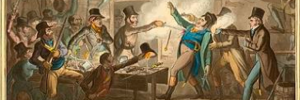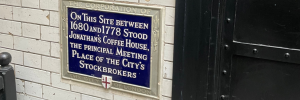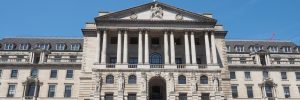Clapham Common has a hidden history from Samuel Pepys and Noel Coward to the first successful measurement of the weight of the planet. Not bad for an often overlooked suburb.
One of the hidden features is Clapham’s very own classic temple. From the 17th century onwards Clapham became the place to be, as connections to the City improved and highwaymen decreased, meaning that you could do a day’s work in the dirty, unhealthy commercial centre and return safely to your family in the country air of Clapham.
Huge houses appeared around the edge of Clapham Common, with equally large gardens. Some of the richest merchants of their time ended up in Clapham. One was Robert Thornton, who became a director of the Bank of England, building his Clapham mansion in the 1760s. His son added an ornamental garden in the 1790s. The house and gardens were largely swept away, first by a nunnery and then by an (award-winning) post-war housing estate.
But hidden behind the Notre Dame housing estate stands an amazing temple, actually an Orangery. Written above in Latin it states “Here is perpetual spring and summer even in other months”. When I take even long-time Clapham residents to this site they are surprised to find this classic relic towering over a small children’s playground. But if you know where to look all round the edge of the common, tucked down Victorian terraces are the remains of once huge 18th century mansions.
I have developed a Secrets of Clapham Common tour and one day I hope to actually run it!
–
Find out more about Clapham Common. Book tickets for Dr Stephen King’s Clapham Common Walk now. Private tour also available here.



